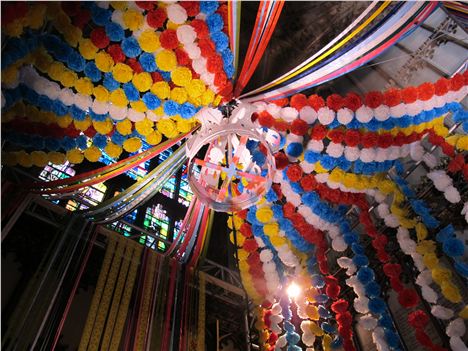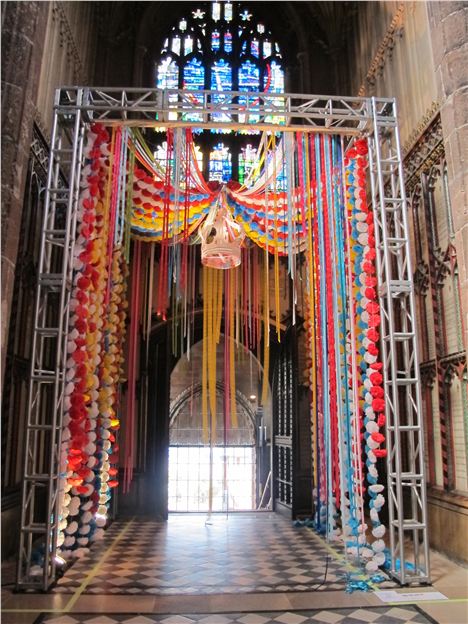REVIVING marginalised, discarded objects and meshing them together with the new is a central feature of Cristina Rodrigues’ latest exhibition, currently on show at Manchester Cathedral.
The broad range of materials used allows the pieces to resonate widely and helps explain why the art was received just as well in Lisbon and Berlin as it has been here in Manchester.
The exhibit aims to display the phenomenon by which dual identities are created when two cultures come together, particularly in relation to the women of central Portugal.
Cristina Rodrigues has a clear concern for the disappearing heritage of the rural interior regions of Portugal and has chosen to highlight this in her well-known installation, ‘The Blanket’. This piece is composed of traditional Adufes woven together with braided silk and Portuguese lace, reminiscent of the squares of a crochet quilt.
Traditionally built and played only by women the Adufes are handmade tambourines, created by stretching boiled sheep skin over a wooden frame. Their appearance is then improved with bright colours, patterns and ribbons. Adufes are a key form of oral tradition in these rural villages and help to keep alive a society which is rapidly disappearing.
The fact it is women who primarily use the tambourines reinforces their role as educators within the community and the part they play in maintaining traditions. Alongside the instruments the presence of braided silk and lace acknowledges the contrast between Western fashion and the colourful costumes worn in the Beira Baixa region of Portugal, again by women. Visitors to the cathedral are invited to reflect on their own cultural roots and the often overlooked methods by which traditions are maintained, encouraging a sense of nostalgia.
Female roles also feature prominently in The Queen, a commentary on the fact that whilst numerous female saints are depicted wearing a crown, notably Saint Elizabeth of Portugal, few women have actually worn one. Such an absence is evident in the elevated nature of the central crown.
That it is so far out of reach reflects what Cristina refers to as the sublime, the continued attempts by women to achieve self perfection. This is a notion that has clear resonations outside of rural Portugal. In this piece the old and discarded is present in the form of paper flowers, the sort that would not look out of place at a local fair and are easily trodden underfoot.
As a whole, this exhibition represents the coming together of rural and urban cultures and the role women have to play in merging the two. The unassuming objects of the recent past are used to evoke contemporary ideas of female power, a point further emphasised by the role local women in Manchester have played in building the silk braids.
The range of materials used allows the pieces to resonate widely and helps explain why the art was received just as well in Lisbon and Berlin as it has been here in Manchester. Visitors to the exhibit will each connect with a different medium or thought present in the artwork.
‘Women From My Country’ runs until Sunday 21 September at Manchester Cathedral
Further information about the artwork can be found at www.cristinarodrigues.co.uk
You can follow Anna Carruthers on @AnnaECarruthers
















